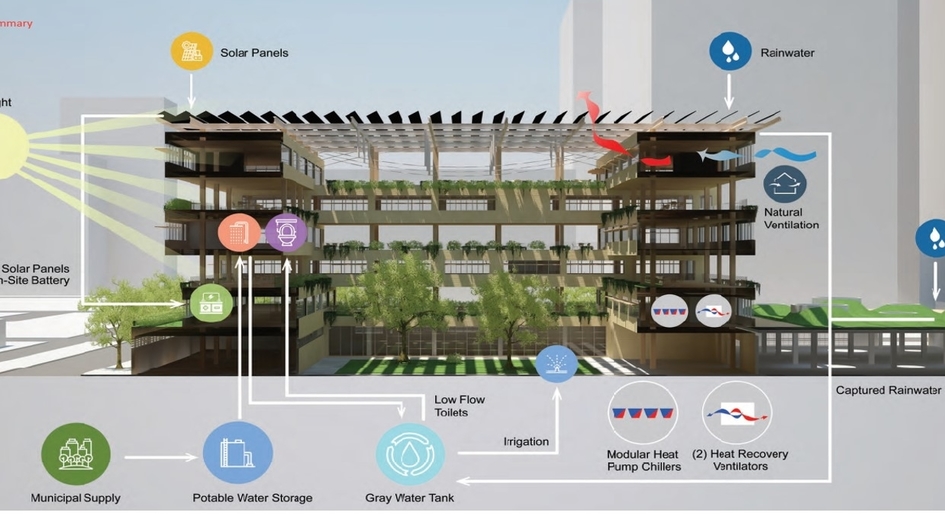Team CREAM — an acronym for: carbon rules everything around me — has captured first place in the 2019 ASHRAE LowDown Showdown modelling challenge. This year, aspirants were asked to deliver designs for a hypothetical new 90,000-square-foot City Hall in San Diego, California, which were evaluated for energy performance, innovation and the collaborative effectiveness of team members.
“The competition not only challenged teams to achieve near net-zero, but also to include design and modelling elements to create a resilient building capable of withstanding natural disasters and providing prolonged emergency operations,” explains Annie Marston, the competition chair.
In this case, it was presumed the City Hall would serve as the city’s emergency operations centre in response to natural disasters and other crises, while already housing key administrators of many vital public services.
Solar power, battery-based energy storage and storage tanks for potable and non-potable water underpin the winning design, which promises the envisioned multi-purpose building would have 14 days of operating capacity in the absence of grid-supplied power. During normal operations, the proposed 427-kilowatt solar photovoltaic array would generate net positive energy, returning an estimated USD $0.137 per square foot ($12,330) annually to the building’s operational budget.
In tandem with energy-saving design features, technology and controls, energy use intensity is projected at 23.9 kBTu per square foot or about 0.293 kilowatt-hours per square foot. Annual water consumption is pegged at 785,000 US gallons, translating to costs of USD $0.077 per square foot.
Members of the interdisciplinary CREAM team — including engineers, architects, energy modellers, resilience and carbon specialists — are practitioners with the national Built Ecology group at the consulting firm, WSP, and work out of various regional offices in the United States.
“With the wide-ranging scope of this year’s competition, encompassing aspects of energy, water, resiliency and health and wellness, everyone had a chance to step up and showcase their expertise, while also being challenged to integrate that work with an evolving design,” observes Jason Lackie, the team captain. “As much as the pallet of tools we drew on helped with this multifaceted design problem, our team’s success depended on our ability to collaborate through obstacles.”
Along with the LowDown Showdown judges, attendees at last month’s ASHRAE Building Performance Analysis Conference in Denver, Colorado, extolled that outcome — voting team CREAM’s design the fan favourite.
Illustration: Basic elements of the CREAM (Carbon Rules Everything Around Me) team’s resilient near-net-zero design.






